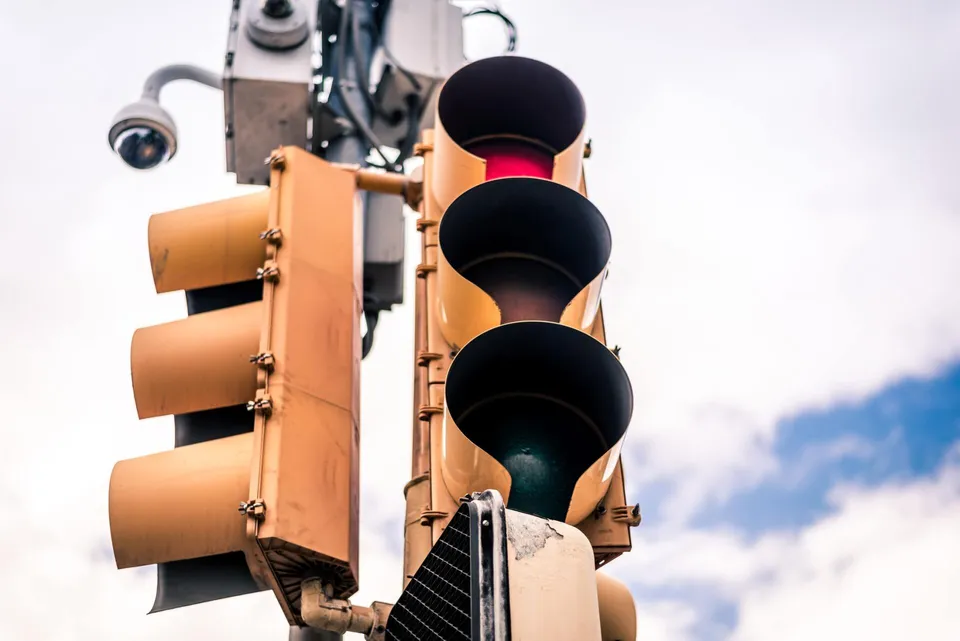Red Light Runners and Information the Jury Isn’t Allowed to See
- January 16, 2021 @ 3:32 pm
- Written by admingil
- Categories: Accident | Auto Accidents | Florida | Legal Advice

Red Light Runners
Across the United States, the economic impact from crashes involving drivers disregarding traffic signals is estimated at $7 billion each year in medical costs, time off work, insurance hikes, and property damage. Every day, thousands of motorists run red lights in Florida, recklessly endangering their lives and the lives of other motorists and pedestrians. According to the Florida State Highway Patrol, over 300,000 motorists are ticketed for running red lights in Florida every year. In 2009, more than five thousand people were injured, fifty six people killed, in crashes where a driver ran a red light. If you have been in an auto accident and need the assistance of experienced car or truck accident attorneys, be sure to contact John Bales Attorneys.
Running a red light can cause a T-bone crash where the at-fault driver collides into the side of an automobile travelling through the intersection in the cross-traffic. A T-bone crash has a very high injury rate and a very high mortality rate compared to rear-end, or “fender-bender” crashes. And it isn’t just red-light runners themselves who suffer; over half of the fatalities in collisions caused by drivers who run red lights are other motorists and pedestrians.
Red light running is often a result of aggressive driving and the time saved by avoiding a red light – an average of 47 seconds – is not worth the potential cost in human lives. An article in U.S. Roads reported on another study by the Insurance Institute for Highway Safety. The study showed that motorists who ran red-lights were often the same people who had received speeding tickets.
In a survey performed by Old Dominion University, 56 percent of Americans admit to running red lights; yet 96 percent of drivers were afraid of being hit by a red light runner. While the fear engendered by red-light runners is pervasive; it stems more from self-preservation than a responsibility to others.
Beginning October 1, 2009, drivers who received a traffic ticket for running a red traffic light in Florida were required to complete a Basic Driver Improvement course. Then, on July 1, 2010, Florida Governor Charlie Crist signed the Mark Wandall Traffic Safety Act, named after a man who was killed by a red light runner, declaring that Red light cameras will be fully legal in Florida. Florida’s red-light camera law took effect immediately, allowing municipalities to install cameras at intersections and to cite violators and fine them $158. Critics argue the use of cameras is unconstitutional and does not establish who has the burden of proof when it came to the enforcement of these red light violations. It is a controversial topic – but if red light cameras prove to deter people from committing traffic violations, subsequently making our roadways safer, the debate will continue.
What is not up for debate is that if you are the victim of a red light runner, you have rights, and an attorney can help you protect those rights.
What the Jury Never Sees
Hello, I’m attorney John Bales, and today I’d like to give you some Legal Insight into…evidence that juries never hear. I have been practicing law in Florida for over 28 years. To this day, I do not understand how certain laws help the people of this state. For example, did you know that Florida juries cannot be told about the insurance that an at-fault automobile driver may have? Florida Statute 627-point-4136 is called the “Nonjoinder of Insurers.” It prevents a victim of a car accident from naming the negligent driver’s insurance company as a party in a lawsuit against the negligent driver. Before this statute took effect, people who were injured in a car crash were allowed to sue the insurance company that insured the negligent driver, instead of the actual driver.
Some have claimed that the intent of this law is to ensure that the availability of insurance has no influence on the jury’s determination of damages. In other words, if the jury knew that the at-fault driver had insurance and did not have to pay for damages, the award given by the jury may be higher just because insurance is available. On the other hand, juries that are not advised of insurance coverage may be giving lower awards because of concerns that the financial loss may overwhelm the negligent driver. I believe that the jury should be given all of the facts, including insurance coverage. Why is the at-fault driver’s insurance coverage hidden from the jury?
Another interesting point is that many times the at fault driver is not represented by an attorney who is with an independent law firm but an in-house attorney who is actually employed by the insurance company that has created an in-house law firm.
Remember, you do have rights. If you are the victim of an accident of any kind, call me at 1-800-CALL-JOHN. And if you have a topic you want me to discuss here, call me or visit my website, JohnBales dot com, and click on Legal Insight.
